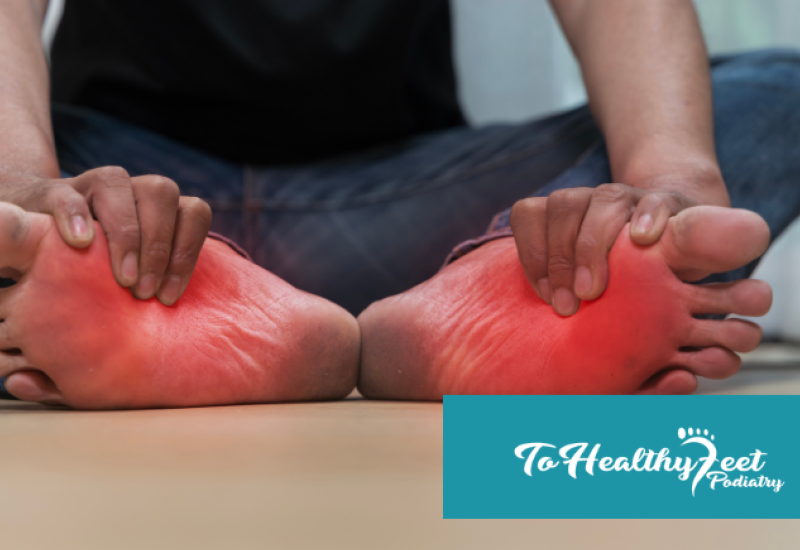Recovering After Morton’s Neuroma Cryosurgery
What is Cryosurgery?
Cryosurgery, also called cryoablation, for Morton’s neuroma uses extreme cold to destroy the tissue (fatty sheath) that has thickened around the affected nerve. A cryo-needle is inserted into the treatment area and cooled to temperatures as low as -70°C. This causes an ice ball to form at the needle’s tip inhibiting pain signals, causing vascular damage to the capillaries that supply the sheath tissue, and causing nerve degeneration. But because the nerve is not completely destroyed, nerve regeneration is possible. And because the connective tissues around the treatment area are not harmed, there is reduced risk for stump neuroma (a risk associated with open neuroma surgery that can result in chronic, debilitating nerve pain).
To increase patient comfort during cryosurgery, a local anesthetic will be used to numb the treatment area. After waiting for the numbing medicine to take effect, cryosurgery for Morton’s neuroma is typically completed within 15-30 minutes in your podiatrist’s office and you will not need crutches or a surgical boot during recovery.
What To Expect After Morton’s Neuroma Cryosurgery
There are many benefits to cryosurgery for Morton’s neuroma. Because cryoablation for Morton’s neuroma is minimally invasive, there is no long recovery or healing required. Patients should expect to rest and keep their foot elevated as much as possible for the first 24 hours following cryosurgery. You will have a dressing covering the injection site and it is important to keep your foot and the dressing dry for three days. By this time the small wound at the injection site will have closed and unless your podiatrist says otherwise, you can remove your bandage. You may experience some mild bleeding or bruising at the injection site or you may notice a small blood blister has formed. This is not unusual and should resolve within a few days. You may experience some numbness in your toes after cryosurgery, but this is not permanent. Your foot should be pain-free in 3-5 days and you can return to normal activities in 5-7 days. Your podiatrist may recommend that you ease into a return to vigorous activity, but many patients are able to return to sports and exercise within one week.
Are There Risks Of Complications After Morton’s Neuroma Cryosurgery?
Compared to traditional, open surgery for Morton’s neuroma (nerve excision), there are very few risks associated with cryosurgery for Morton’s neuroma. Although extremely rare, there is a small risk of infection or abscess at the injection site. The risk for loss of sensation is largely absent. The treated neuroma will be completely destroyed, but it is possible for new nerves to form and become irritated, and once you have had a neuroma, you are at increased risk for developing the condition again. If a new neuroma forms, cryosurgery can be carried out again without risk of additional complications.
Avoid A Lengthy Recovery With Morton’s Neuroma Cryosurgery At To Healthy Feet
Morton’s neuroma cryosurgery offers patients the option to treat a painful neuroma with a reduced risk of complications and minimal recovery. This advanced treatment option is quick and relatively painless and one of the most effective treatments available for Morton’s neuroma. If you are struggling with the pain and discomfort of Morton’s neuroma and wish to learn more about minimally invasive cryosurgery to get back on your feet, contact the team of expert NYC podiatrists at To Healthy Feet today.
Our expert team of NYC foot doctors in Manhattan can expertly assess your foot pain, diagnose Morton’s neuroma, and discuss your lifestyle and your goals for treatment. We provide accurate diagnosis and comprehensive foot and ankle care and have the tools and technologies necessary to provide a variety of tailored treatment approaches including minimally invasive cryosurgery for Morton’s neuroma at each of our Manhattan Podiatry Clinics. If you are experiencing pain due to Morton’s neuroma or any other foot or ankle condition pain, call To Healthy Feet Podiatry at 1-917-398-3668 or fill out the contact form to book your appointment at our Upper East Side, Times Square, Midtown Grand Central, or Downtown Wall Street locations today.
FAQ
Q: Does cryosurgery destroy the affected nerve?
A: No. The procedure merely destroys the thickened tissue that has formed around the nerve. The nerve itself is preserved and will regain full function and sensation after the recovery period.
Q: Does cryosurgery require any stitches?
A: No. The incision made by this minimally invasive procedure does not require any stitches.
Q: Will Morton’s neuroma come back after cryosurgery?
A: No, the neuroma will be destroyed, however it is possible for new nerves to form and become irritated. Follow these tips to prevent Morton’s neuroma.




